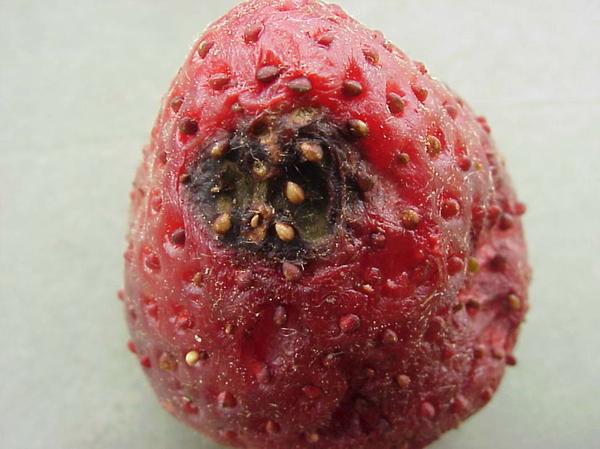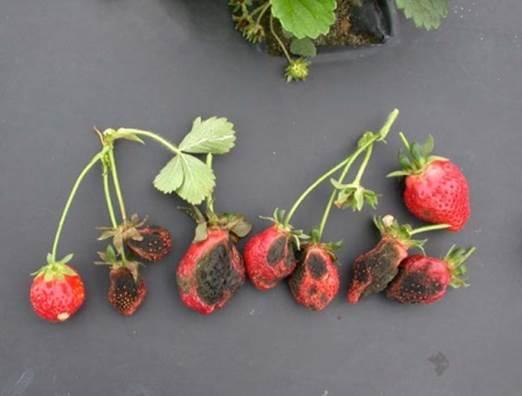Overview
Alternaria black spot occurs in fields where strawberry fruit have been damaged by hail, excess mite injury, natural cracking, or other physical or biological sources of wounding. Injured strawberry fruit is colonized by Alternaria species, probably Alternaria alternata. Lesions are filled with a black mold that have a greenish hue when viewed with reflected light. However, this is considered a secondary infection i.e. the fungus does not cause direct injury but grows on injured fruit. Thus, the problem does not spread or become a major problem and management recommendations are not needed. It is important to discern this problem and be able to differentiate it from Anthracnose fruit rot, which is a serious problem. See Anthracnose Fruit Rot of Strawberry.
Publication date: July 29, 2014
Reviewed/Revised: July 26, 2024
N.C. Cooperative Extension prohibits discrimination and harassment regardless of age, color, disability, family and marital status, gender identity, national origin, political beliefs, race, religion, sex (including pregnancy), sexual orientation and veteran status.


